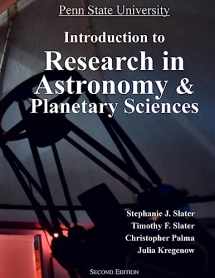
Introduction to Research in Astronomy: A Backwards-Faded Scaffolding Approach
Book details
Summary
Description
Modern science teaching challenges students to engage in scientific research and participate in scientific discourse – in short, to do science themselves rather than just learn about it. Recent learning sciences research results demonstrate that in order for novice science students to effectively design, conduct, report, and defend science observations and experiments, learners must be purposefully supported in each step of the scientific process before they are able to successfully pursue scientific questions of their own design. Using a backwards faded scaffolding approach, these labs provide classroom-ready materials for bringing these two ideas together: scaffolding strategies that teach students to fruitfully engage in scientific thinking and design astronomy investigations by mining online astronomy databases, including GalaxyZoo access to the Sloan Digital Sky Survey and NASA Solar System Simulators.


We would LOVE it if you could help us and other readers by reviewing the book
Book review



